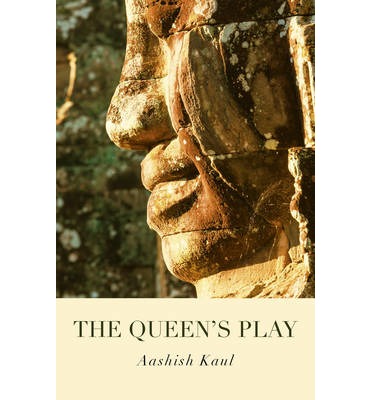Jocelyn Hungerford reviews “The Long Run” by Catriona Menzies-Pike
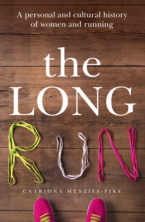 The Long Run
The Long Run
by Catriona Menzies-Pike
ISBN: 9781925344479
Reviewed by JOCELYN HUNGERFORD
What we talk about when we talk about grief: The Long Run: A Personal and Cultural History of Women and Running
It begins with a huge loss. When Catriona Menzies-Pike was just twenty, she came home from a bushwalk to find that the unthinkable had happened: both her parents had died in a plane crash. How does someone even start to take in, let alone cope with, something like that: ‘this prospect that was just too gigantic to credit’?
The Long Run is a thoroughly researched, considered and absorbing analysis of what running might mean culturally to women, and other reviews of the book have covered these aspects, but the meditation on grief, bound up in Menzies-Pike’s own story of how she comes to start running herself, is one of its most compelling aspects. Menzies-Pike is a literary scholar and near the beginning there’s a witty list of options for the kind of book it won’t be (‘Library Lizard Joins the Jocks!’), as well as a brief survey of some of the literature of running already extant. As she observes of Haruki Marukami’s What I Talk About When I Talk About Running, ‘Books about running are often like this, in that they’re about something else.’ (5) A defining characteristic of grief is that it is hard to talk about, and it’s a tribute to Menzies-Pike’s skill as a writer that she does find the words. There are many thoughtful reflections here on the way grief can take a person down; its intense, shocking loneliness, made worse by the necessity of performing ‘resilience’; the feeling of somehow doing it wrong. ‘Some people appear to thrive after trauma. Loss emboldens them, they form great ambitions and stride forward as if nothing, now, could hurt them. They are exhibits in those old stories about disaster being character-building, strength in adversity. My experience, to my shame, was nothing like this. I couldn’t find it in me to do much more than reel from one day and year to the next, with little optimism about what lay ahead. I must have been difficult to be around: self-destructive, and often full of anger and denial.’
It is ten years of ‘flailing’ before she begins to run, and her emergence from depressive stasis is slow; there’s no single conversion moment, just a quiet start on a treadmill in a grimy gym (and some wonderfully comedic moments, such as her encounter with ‘Biff’, the personal trainer with whom she is entertainingly mismatched). ‘It took more than running, of course, for me to haul myself out of the quicksand of grief,’ but as she trains, things begin to shift; the move from the inwardness of depression to a more expansive outlook is mirrored as she begins to train outside. Flashes of sensuous lyricism enrich some of the book’s most compelling passages as she notices colours, sounds, smells, the changing flowers and leaves of different seasons, and the lush physical beauty of her territory, Sydney. ‘I became a moving part of the tightly controlled curves that ricochet from Woolloomooloo to the Botanic Gardens, around to the Opera House and into the lopped oblong of Circular Quay. New categories for trees presented themselves: kind trees with broad shade; trees with treacherous flowers that turn the pavement into a bright slippery hazard; trees with bothersome hard fruits that roll underfoot like ball bearings. I kept track of the brick fences colonised by cats as snoozing spots and the gates through which friendly dogs wedged their wet noses. My own nose I stuck into other people’s gardens – magnolias, waxy gardenias, all the stelliferous jasmines, lilacs, daphnes: it was winter, and I wished it were spring so that the heavy fragrant flowers might start to bloom. I stopped once to chat to a man high on a ladder, harvesting a lilli pilli to make jam; I remember him every time I run through a windfall of the pink fruit.’ Running brings her into both her body and her surroundings, she becomes ‘an animal presence in the city’. The way trauma lodges in the body as much as in the mind and needs physical release becomes clearer: ‘When I began to run, my understanding of the significance of my body in the world shifted. I grasped the link between despair and immobility at both an intellectual and embodied level: for years I’d been stuck in grief, convinced my body lacked the eloquence for anything but sadness’.
It’s slightly embarrassing now to recall that when the author told me she’d started running, my first response was to feel concern. I worried that my friend might be prey to the same body insecurity in which I naively believed I was alone; I worried (in a clear case of overstepped boundaries and projection) about her knees. Such concern is telling; The Long Run is densely populated with concerned patriarchs – race officials, chaperones, health professionals – all terribly, terribly worried about the damage women might do to themselves (particularly their fertility) if they ran long distances. I was responding to some deeply implanted conditioning. Women’s participation in the sport now is thanks to some very brave, to say nothing of talented and determined athletes, who tried a number of tactics, from hiding in bushes at the sidelines or planning to run in drag, only for men to try to physically pull them off the track, or if they did complete the race, had their times discounted for running in the wrong kind of body. When women were officially allowed to run in long-distance races, all manner of caveats applied; the image of Violet Piercy running, chaperoned by men on bicycles and trailed by an ambulance, is particularly striking. As I read, a new respect formed for the female runners around me (until then, a mysterious, masochistic tribe), knowing someone had had to fight for them to be there.
My literally pedestrian response, the clueless assumption that the desire to run might be about getting thin, is also conditioned, of course. If you live in a female body it’s near-impossible to escape the messages – still – that how you look matters more than what you can do. Even if what you do is analyse cultural messages. The faces and bodies of female runners are scrutinised in a way those of male runners are not, and Menzies-Pike incisively examines how prevalent this focus still is; how, as she begins to run herself, she is subject to intrusive questions, comments on her body and unsolicited advice, when ‘What I wanted to look like when I ran was invisible. I didn’t want to be available for casting in any of these narratives. That’s why a shadowy gym was initially such a refuge. Some people enjoy being on display – might find it, ghastly word, empowering – but not me. I really did want to blend into my surroundings, to throw off the awareness that I was being looked at. This wasn’t just my own neurosis, but one that many women around me carry. “I could never run like you do,” a friend told me. ‘I’d look like a complete idiot.” … The desire to run unnoticed is a common note in memoirs by women runners, whether they’re champions or casual athletes. … It’s exhausting to have absorbed such demands about how we appear to the world. They can slow a woman down, they can stop you altogether.’ I cheered my way through this passage. This is a recurring problem for othered bodies: female, black, brown, disabled, queer and trans. How we would like to just get on and do our work, or our exercise, or even just walk down the street without having to be part of a spectacle. It’s tiring to be always doing the work of normalising something that should already be unremarkable. I’m conscious, even as I write, that I replicate those insidious messages, give them weight.
Because there are bigger reasons to run, or do anything that pushes us. As well as challenging received ideas about what women generally can do, running is a test of what Menzies-Pike has been led to believe she cannot do. Specifically, running occupies for her ‘the humiliated eternity of the maladroit teenager’ (what a perfect phrase this is, those assonant l’s and t’s sticking into the sentence like the awkward knees and elbows of its subject; she writes with a poet’s attunement to language and there are pleasures like this on every page.) ‘For me, as for many other dorky, uncoordinated kids, school sports were an intense and frequent humiliation … what I hated was that my sporting failures couldn’t be hidden. The kids who botched their algebra quizzes didn’t have their mistakes paraded in front of the class.’ When you are told often enough that you’re not capable of something it becomes a self-fulfilling prophecy; challenging that successfully can make a lot of other things feel possible: ‘Now when I run it’s as if I’m pushing the earth away with my feet and, with it, everything I told myself I could never do, and everything that women were told for centuries was beyond them.’
Her meditative approach confounds some of her fellow runners, and there’s an interesting discussion of friction within the sport over slow runners, who some feel are spoiling things. There wasn’t much space for the non-competitive exerciser in the Australian education system in which our generation grew up, and to those of us for whom school sport was a painful melee of boredom, confusion and being shouted at, it often put us off exercise altogether as adults, with predictable results for our mental and physical health. There are many deft moments of psychological observation in The Long Run; Menzies-Pike notes the childish competitiveness her running brings out in some people, who want to compare times and feel satisfied to learn they are the faster runner: ‘I want to tell them beating me is not much of an achievement.’ Playground dynamics are never far away even in adulthood, but as running turns into a source of pleasure, their significance recedes. Running becomes a place where impossible emotions – too huge, too angry, too sad – can move through her safely. As she runs, ‘[I] played through tiny scenes of family life that had once left me in a raw rage. … If my skull was suddenly flooded by unmanageable emotion, I ran faster and faster until the clatter of my heart and the burn in my calves hauled me back to the present.’
Menzies-Pike explicitly resists framing this as a redemption narrative, promoting running as a panacea for grief, or exhorting others to run; she is too careful a thinker for that, aware that there is a cruel underside to such narratives. ‘What is it that triggers the plasticity of mind required to change ingrained habits? To insist that it’s just a matter of getting started is a failure of empathy that makes losers of those who can’t flick a switch in their lives.’ She’s conscious that having the time and being able-bodied enough to run aren’t options everyone has, and conscientious about acknowledging this. Gentle fun is poked at the whiteness and middle-classness of it all. But a generosity of spirit drives the book; ‘if someone has a sad story to tell, I listen, because no story is sadder than the one that goes unheard’. The Long Run skilfully connects the personal and historical accounts and opens the way for more; it’s an absorbing and moving (literally; as I tie myself in knots writing this, the book itself reminds me to go outside and do some exercise) contribution to sport writing, to feminist history, and to the literature of grief.
JOCELYN HUNGERFORD is a writer and editor who lives in the Blue Mountains. She is categorically not a runner, but is a fan of women’s UFC, and is becoming quite handy with a chainsaw, axe and scythe.
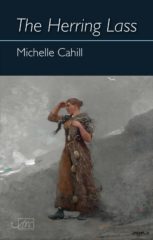 The Herring Lass
The Herring Lass The Historian’s Daughter
The Historian’s Daughter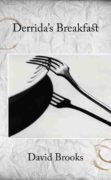 Derrida’s Breakfast
Derrida’s Breakfast 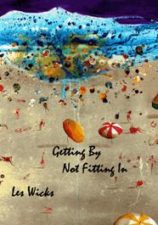 Getting By Not Fitting In
Getting By Not Fitting In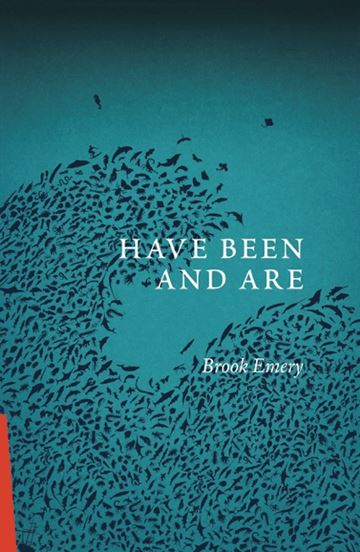 Have Been And Are
Have Been And Are


